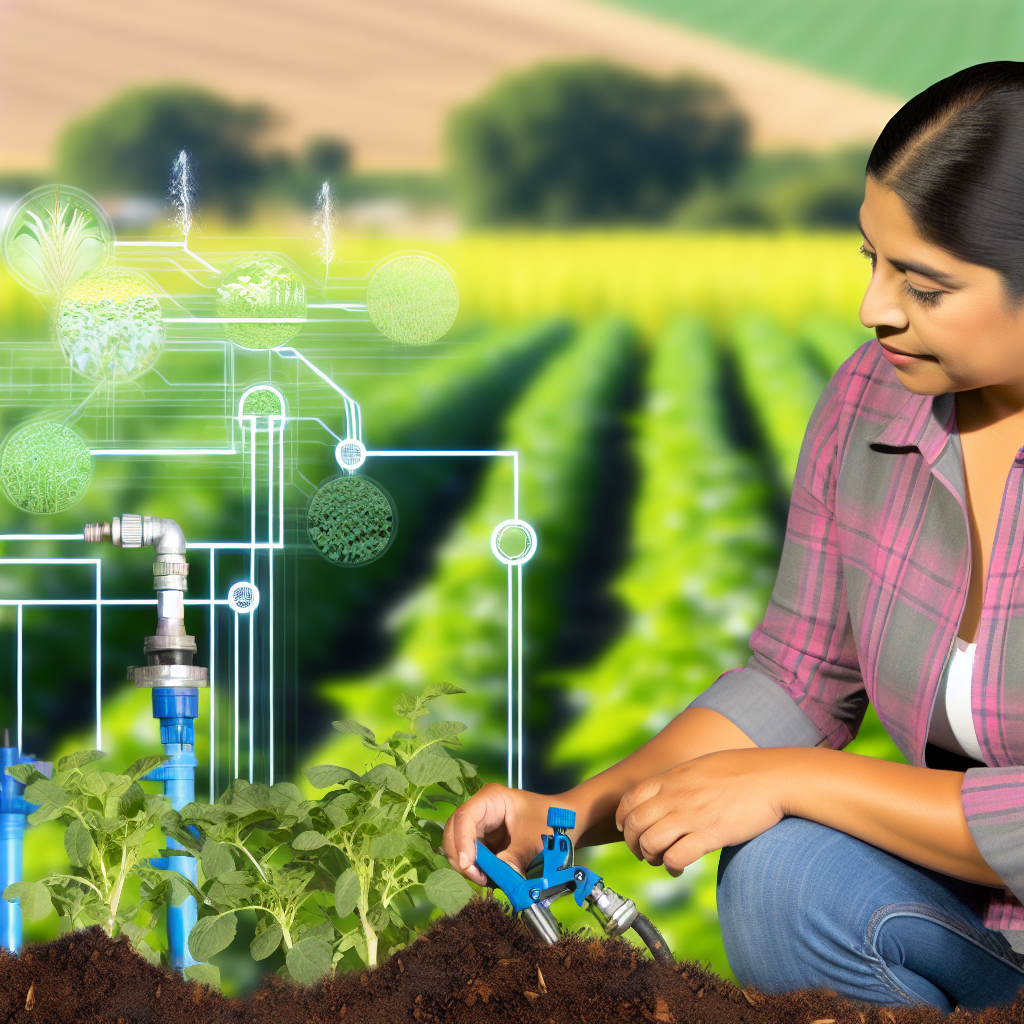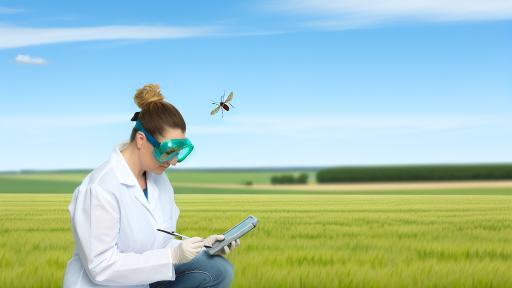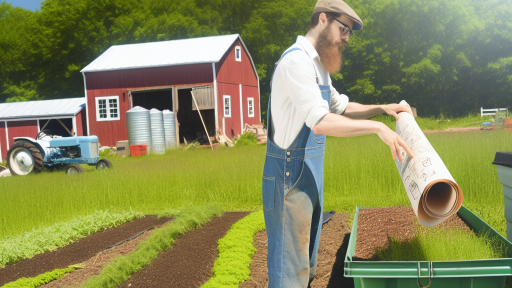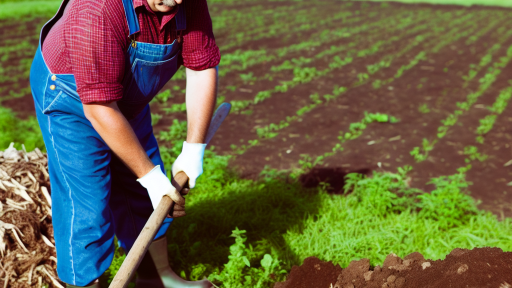Introduction to Integrated Pest Management
Integrated Pest Management, or IPM, plays a crucial role in sustainable agriculture.
It balances pest control with environmental health and economic viability.
Farmers face increasing pest challenges due to climate change and monoculture practices.
Thus, adopting IPM strategies is vital for resilience in agricultural systems.
IPM focuses on understanding pest life cycles and environmental factors.
Moreover, it emphasizes the use of multiple control methods rather than relying solely on pesticides.
This approach reduces the risks associated with chemical treatments.
Additionally, it safeguards beneficial organisms and promotes biodiversity.
Key Principles of IPM
The core principles of IPM include prevention, monitoring, and control.
Prevention measures may involve crop rotation and the use of resistant varieties.
Monitoring pest populations aids in making informed management decisions.
Control methods encompass biological, cultural, mechanical, and chemical strategies.
Benefits of Implementing IPM
IPM leads to a reduction in pesticide use and costs for farmers.
It also minimizes environmental impacts and promotes public health.
Furthermore, IPM enhances the sustainability of agricultural ecosystems.
Transform Your Agribusiness
Unlock your farm's potential with expert advice tailored to your needs. Get actionable steps that drive real results.
Get StartedIn addition, it boosts farmer resilience against pest outbreaks.
Real-World Applications of IPM
Many farmers worldwide successfully implement IPM practices.
For example, Maria Gonzalez employs IPM in her organic vegetable farm.
She utilizes crop rotation and beneficial insects to manage pests effectively.
In contrast, James Thompson integrates monitoring tools to inform his pest management decisions.
Both farmers report improved yields and reduced chemical inputs.
Challenges in IPM Adoption
Despite its advantages, several challenges hinder IPM adoption.
Many farmers may lack knowledge or resources for effective implementation.
Additionally, there can be resistance to change from traditional methods.
Furthermore, the initial investment for monitoring tools may deter some farmers.
Key Principles of IPM
Prevention Strategies
Prevention is the first line of defense in Integrated Pest Management (IPM).
Healthy crops resist pests better and reduce the need for controls.
This involves good agricultural practices and biodiversity promotion.
Crop rotation disrupts pest life cycles and improves soil health.
Using pest-resistant varieties can also minimize pest outbreaks.
Encouraging natural predators can further aid in pest prevention.
Monitoring Techniques
Monitoring is crucial for timely decision-making in IPM.
Regular field observations help farmers identify pest presence early.
Use of traps can provide valuable data on pest populations.
Additionally, economic thresholds guide when to implement control measures.
Farmers should document their findings to analyze pest patterns.
Data-driven approaches enhance the effectiveness of pest management.
Control Strategies
Control strategies encompass a range of methods to manage pests.
Cultural controls improve farming practices to reduce pest activity.
Showcase Your Farming Business
Publish your professional farming services profile on our blog for a one-time fee of $200 and reach a dedicated audience of farmers and agribusiness owners.
Publish Your ProfileBiological controls utilize natural pest enemies to manage populations.
Chemical controls should be the last resort in an IPM program.
When necessary, applying targeted pesticides minimizes harm to beneficial species.
Farmers should always follow label directions for safe pesticide use.
By combining methods, farmers can effectively manage pests sustainably.
Types of Pests and Their Impact on Agricultural Productivity
Overview of Agricultural Pests
Agricultural pests encompass various organisms that harm crops significantly.
These pests can include insects, rodents, birds, and even weeds.
Each pest type presents unique challenges to farming operations.
Categorizing Agricultural Pests
Understanding pest categories helps in effective management strategies.
Insects can be broadly classified into herbivores, predators, and parasites.
Herbivorous insects consume plant materials, reducing crop yields.
Predators contribute to pest control by feeding on harmful insects.
Parasites may weaken plants through nutrient extraction.
Rodents not only consume seeds but also damage infrastructure.
Weeds compete with crops for essential resources like nutrients and water.
Impact on Crop Yields
Pests can drastically reduce agricultural productivity.
Crop losses due to pests can lead to significant economic damage.
Moreover, farmers face increased costs related to pest control measures.
As pest populations explode, so does the risk of food scarcity.
Consequently, pest management becomes essential for sustainable agriculture.
Environmental and Economic Effects
Pest infestations also negatively affect biodiversity.
They may lead to the overuse of chemical pesticides, harming ecosystems.
Employing pesticides can create resistance in pest populations.
This resistance complicates future pest management efforts.
Ultimately, these dynamics increase overall farming costs.
Strategies for Managing Pests
Integrated Pest Management (IPM) provides a comprehensive approach.
This method combines biological, cultural, and chemical practices.
Farmers can monitor pest populations effectively using traps and scouting.
Additionally, crop rotation and intercropping help disrupt pest cycles.
Utilizing natural predators offers an eco-friendly control option.
Lastly, educating farmers on best practices enhances IPM effectiveness.
You Might Also Like: Composting Basics For Better Soil Health
Cultural Practices in Integrated Pest Management
Importance of Crop Rotation
Crop rotation plays a vital role in sustainable agriculture.
It helps prevent the build-up of pests and diseases.
This practice improves soil health and fertility.
Additionally, it reduces reliance on chemical pesticides.
Diverse crops disrupt the life cycles of harmful organisms.
Benefits of Intercropping
Intercropping enhances biodiversity on farms.
This method involves planting two or more crops together.
Such diversity can deter pests naturally.
Showcase Your Farming Business
Publish your professional farming services profile on our blog for a one-time fee of $200 and reach a dedicated audience of farmers and agribusiness owners.
Publish Your ProfileMoreover, it utilizes nutrients more efficiently.
Farmers report increased yields in intercropped fields.
Soil Health Management Techniques
Maintaining healthy soil is crucial for sustainable farming.
Practices like cover cropping protect soil from erosion.
Adding organic matter boosts soil fertility and structure.
Regular soil testing informs management decisions.
Healthy soil supports diverse microbial ecosystems.
Find Out More: Implementing Agroforestry for Water Efficiency
Biological Control Methods
Introduction to Biological Control
Biological control involves using natural predators to manage pests.
This method reduces reliance on chemical pesticides.
Farmers benefit from sustainable practices while preserving ecosystems.
Key Beneficial Organisms
Predators play a crucial role in biological control.
Ladybugs effectively control aphid populations.
Also, lacewings consume various pests and their larvae.
Additionally, parasitic wasps target specific pest species.
Implementing Biological Control
Integrating beneficial organisms requires careful planning.
Farmers should first identify the target pest species.
Next, they must select appropriate biological controls.
Planting habitats will encourage beneficial organism populations.
Regular monitoring ensures effectiveness over time.
Challenges in Biological Control
Biological control faces several challenges in implementation.
For instance, some beneficial organisms may not survive in new environments.
Moreover, timing is crucial; introductions must align with pest outbreaks.
Farmers should be aware of potential competition among species.
Future of Biological Control
The future of biological control looks promising.
Advancements in research will enhance effectiveness and reliability.
Collaboration among farmers and researchers will drive innovation.
Integrating technology can further improve pest management strategies.
Uncover the Details: Cover Crops for Enhanced Carbon Sequestration
Chemical Control Options
Introduction to Pesticides
Pesticides play a crucial role in modern agriculture.
They protect crops from pests, weeds, and diseases.
However, their use demands careful consideration and responsibility.
Choosing the Right Pesticide
Selecting the appropriate pesticide is essential for effective pest control.
Consider the target pest, crop type, and environmental factors.
Furthermore, always check for alternative pest management options.
Understanding Pesticide Labels
Reading and understanding pesticide labels is vital for safe use.
Labels provide important information on usage, safety, and disposal.
Always follow the instructions provided on the label.
Applying Pesticides Safely
Safe application methods help minimize risks to humans and the environment.
Wear appropriate protective gear, such as gloves and masks.
Showcase Your Farming Business
Publish your professional farming services profile on our blog for a one-time fee of $200 and reach a dedicated audience of farmers and agribusiness owners.
Publish Your ProfileApply pesticides during calm weather to prevent drift.
Also, avoid applying chemicals when rain is expected.
Timing and Frequency of Application
Timing affects the effectiveness of pesticide application.
Apply pesticides at the right growth stage of the target pest.
Additionally, follow recommended frequency limits to avoid resistance build-up.
Monitoring and Evaluation
Continuous monitoring after application ensures effective pest control.
Evaluate the results to determine if further action is needed.
Adjust future applications based on observed effectiveness.
Following Integrated Pest Management (IPM) Principles
Incorporate IPM strategies to enhance sustainability.
Utilize biological control methods alongside chemical applications.
Educate yourself on the local ecosystem to make informed decisions.
Ultimately, aim to use pesticides as a last resort.
Disposal of Pesticide Containers
Proper disposal of pesticide containers is critical to environmental safety.
Follow local regulations regarding container disposal.
Rinse containers thoroughly and recycle when possible.
Never dispose of pesticides in household trash or down drains.
Explore Further: Sustainable Approaches to Farm Byproduct Recycling

Monitoring and Assessment Techniques for Effective IPM Implementation
Introduction to IPM Monitoring
Integrated Pest Management (IPM) requires consistent monitoring of pests.
Monitoring helps identify pest populations and their life cycles.
Early detection can prevent significant agricultural damage.
Setting Up Observation Protocols
Create structured observation protocols for effective monitoring.
These protocols should detail where and when to check for pests.
Include specific criteria for identifying pest-infested areas.
Utilizing Technology in Monitoring
Incorporate technology to enhance monitoring efficiency.
Consider using traps that monitor insect populations.
Employ smartphone applications for easy data recording.
Assessing Environmental Conditions
Assess environmental factors influencing pest populations.
Monitor temperature, humidity, and other climatic conditions.
These factors can influence pest behavior and reproduction.
Regular Data Collection and Analysis
Regular data collection ensures timely assessment of pest trends.
Analyze collected data to identify patterns and potential outbreaks.
Use this information to make informed management decisions.
Collaboration with Agricultural Experts
Engage with agricultural experts for comprehensive monitoring approaches.
Consult with entomologists or agronomists for pest identification.
Work together to develop customized monitoring plans for specific crops.
Implementing Action Plans Based on Findings
Develop action plans based on monitoring results.
Adjust management strategies according to pest population assessments.
Implement interventions promptly to minimize crop damage.
Feedback and Continuous Improvement
Establish feedback mechanisms to improve monitoring processes.
Regularly review monitoring effectiveness and make necessary adjustments.
Showcase Your Farming Business
Publish your professional farming services profile on our blog for a one-time fee of $200 and reach a dedicated audience of farmers and agribusiness owners.
Publish Your ProfileContinuously adapt strategies to evolving pest challenges.
Case Studies of Successful IPM Practices
Vegetable Production
In California, sustainable vegetable growers have implemented effective IPM strategies.
For instance, they utilize beneficial insects to control aphid populations.
Additionally, cover crops suppress weeds and improve soil health.
These practices have led to reduced pesticide use significantly.
Consequently, farmers report higher profits and healthier ecosystems.
Citrus Farming
Florida citrus growers adopted a holistic IPM approach to combat pest pressures.
They monitor pest populations using traps and visual inspections.
This enables timely interventions with reduced harmful products.
Furthermore, integrating biocontrol agents proved effective against scale insects.
The success led to improved fruit quality and yield consistency.
Rice Cultivation
In Vietnam, rice farmers have shifted to IPM methods to combat pests and diseases.
They started by adopting resistant rice varieties to fungal infections.
Alongside this, they encourage natural predators like frogs in fields.
As a result, pesticide application has decreased by over 30%.
This shift has also ensured healthier aquatic ecosystems.
Grape Vineyards
In Oregon, vineyard managers practice IPM to manage grape pests effectively.
They apply targeted sprays only when necessary, based on monitoring data.
The use of weather forecasts helps prevent disease outbreaks strategically.
Moreover, they implement cover crops to enhance soil fertility.
This integrated approach has led to premium grape quality for winemaking.
Pear Orchards
Washington pear growers have successfully integrated IPM into their farming practices.
Regularly scouting for pests allows growers to make informed decisions.
They also implement pheromone traps to disrupt pest mating cycles.
The result is a notable decline in pesticide reliance and increased fruit yield.
Finally, healthier trees contribute to a more resilient orchard ecosystem.
IPM Best Practices for Sustainable Agriculture
Emphasizing Integrated Approaches
Integrated Pest Management (IPM) combines various strategies for effective pest control.
This approach minimizes the use of chemical pesticides.
It relies on cultural, biological, and mechanical control methods.
Farmers collaborate with agricultural scientists to develop tailored IPM plans.
Enhancing Biodiversity in Farming Systems
Biodiversity promotes natural pest control mechanisms.
Diverse crop rotations disrupt pest life cycles and reduce infestations.
Planting cover crops adds organic matter to the soil.
Additionally, incorporating native plants fosters beneficial insect populations.
Utilizing Technology and Data
Modern technology plays a crucial role in advancing IPM practices.
Sensors and drones aid in monitoring pest populations and crop health.
Data analytics helps farmers make informed decisions about pest control.
As a result, resource use becomes more efficient and precise.
Educating and Engaging Farmers
Farmer education and engagement is vital for successful IPM adoption.
Workshops and training sessions enhance understanding of IPM principles.
Showcase Your Farming Business
Publish your professional farming services profile on our blog for a one-time fee of $200 and reach a dedicated audience of farmers and agribusiness owners.
Publish Your ProfileNetworking with local extension services fosters active knowledge sharing.
Collaboration empowers farmers to tackle pest challenges effectively.
Future Trends in IPM
IPM continues to evolve with advancements in research and technology.
Biopesticides are gaining popularity as sustainable alternatives to chemical controls.
Furthermore, precision agriculture technologies enhance IPM implementation.
These developments show promise for more resilient agricultural systems.
Looking Ahead to Sustainability
The future of IPM lies in its ability to promote sustainability in agriculture.
By adapting to climate challenges, IPM enhances resilience.
Moreover, it supports economic viability for farmers and rural communities.
Ultimately, effective IPM practices can secure food production for generations.
Additional Resources
Integrated Pest Management (IPM) | Sustainable Agriculture …




